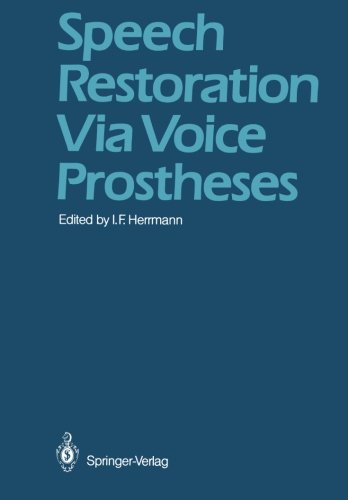图书简介
This book contains a series of articles and summaries regarding surgical voice restoration after or during a total laryngectomy. Most readers will recall the pleasure patients feel when they are able to speak again after years of mute existence. A few simple questions are relevant to the articles contained herein. Firstly, how important is a person?s voice? Is it for example as important to man as the dances bees use to convey essential information? Even the most superficial consideration must tell us that the function of the human voice is still more important as we already have a detailed body language of our own, e.g., when we feel pain,joy, love, fear, etc. Without doubt, speech is the basis of knowledge and surely it is the capacity to learn which characterizes the human intellect. Secondly, one may ask whether man was always intended to have a voice? A few every-day observations can provide us with an answer. When little children play together, for instance, they all speak at once and seldom listen to what their neighbors are saying. Obviously, this is b~cause it is not so important what they are actually saying as that something is being said at all.
Historical Perspective.- 1 The Different Types of Voice Prostheses.- The Simple Semi-Permanent Supratracheal Valve Prosthesis after Total Laryngectomy.- A Second Generation Artificial Larynx Prosthesis ? A Comparative Clinical Evaluation.- The Groningen Voice Prosthesis for Secondary Voice Rehabilitation after Total Laryngectomy.- The Groningen Voice Prosthesis for Voice Rehabilitation During Total Laryngectomy.- The Groningen Button Results.- Voice Rehabilitation after Laryngectomy with the Groningen Voice Prosthesis: Experiences Made in Nijmegen.- The Phoniatric Results of Our Voice Prostheses (36 Cases).- The Hypopharyngeal Puncture.- Our Experiences with Delayed Primary Voice Rehabilitation.- Assessment and Management Protocol for Tracheo-Oesophageal ?Puncture? Procedures.- 2 Experimental Research Regarding the Function and Handling of Voice Prostheses.- Physical Aspects of Tracheo-Oesophageal Shunt Prostheses (Pressure ? Flow Measurements of a Model Prosthesis).- In Vitro Experiments Using Valve Prostheses.- Wear and Tear on the Silicon of Valve Prostheses in the Upper Digestive Tract ? A Study Using Electron Microscope Scanning.- Biocompatibility of Plastic Materials.- 3 In Vivo Experiments Using Voice Prostheses.- Aerodynamic Properties of Buttons and Button-Assisted Oesophageal Speech.- In Vivo Experiments Using Valve Prostheses ? Resistance and Pressure/ Time Measurement.- 4 Problems Occurring with the Inferior Pharyngeal Muscle and Their Possible Solutions.- Function of the Pharynx and Killian Mouth in Voice Production with Our Prosthesis.- The Anatomy of the Larynx, Pharynx and Cervical Oesophagus in Relation to Surgical Voice Restoration.- Glottoplasty with Functional Pharynx Surgery and Tracheostomaplasty.- 5 Indications, Results and Their Means of Evaluation.- Possible Ways of Reconstructing the Pharynx with a One-Step Operation while Attempting Voice Restoration.- Problem of the Indications for the Use of a Valved Prosthesis.- Lung Function Tests in Laryngectomized Patients.- Evaluation of Speech with and Without a ?Groningen Type? Voice Button.- Intelligibility, Vocal Intensity, and Long-Term Average Spectra of Groningen Button-Oesophageal Speech.- The Postlaryngectomy Telephone Intelligibility Test (PLTT).- 4 Years Experience of Voice Production and Deglutition Using Valve Prostheses.- 6 Speech Training, Intelligibility and Psychosocial Aspects.- Speech Training of Oesophageal Voice with a Button.- Intelligibility and Psycho-Social Adjustment. A Comparison Between Patients with Oesophageal Voice and Patients with a Voice Prosthesis.- Social and Psychosocial Aspects of Vocal Rehabilitation in Laryngectomized Patients ? Preliminary Results.- 7 Fingerless Voice Restoration.- Experiences with Surgical Voice Restoration.- Amatsu?s Technique Using the Blom-Singer Tracheostoma Valve.- Fingerless Voice Restoration Using Amatsu?s Technique.- Experience with the ESKA-Herrmann Tracheostoma Valve.- Implantation of the Recurrent Nerve and Its Possible Use as a Trigger for an Artificial Larynx.- 8 Experimental Research to Establish an Artificial Larynx.- Experimental Research to Establish an Artificial Larynx.
Trade Policy 买家须知
- 关于产品:
- ● 正版保障:本网站隶属于中国国际图书贸易集团公司,确保所有图书都是100%正版。
- ● 环保纸张:进口图书大多使用的都是环保轻型张,颜色偏黄,重量比较轻。
- ● 毛边版:即书翻页的地方,故意做成了参差不齐的样子,一般为精装版,更具收藏价值。
关于退换货:- 由于预订产品的特殊性,采购订单正式发订后,买方不得无故取消全部或部分产品的订购。
- 由于进口图书的特殊性,发生以下情况的,请直接拒收货物,由快递返回:
- ● 外包装破损/发错货/少发货/图书外观破损/图书配件不全(例如:光盘等)
并请在工作日通过电话400-008-1110联系我们。
- 签收后,如发生以下情况,请在签收后的5个工作日内联系客服办理退换货:
- ● 缺页/错页/错印/脱线
关于发货时间:- 一般情况下:
- ●【现货】 下单后48小时内由北京(库房)发出快递。
- ●【预订】【预售】下单后国外发货,到货时间预计5-8周左右,店铺默认中通快递,如需顺丰快递邮费到付。
- ● 需要开具发票的客户,发货时间可能在上述基础上再延后1-2个工作日(紧急发票需求,请联系010-68433105/3213);
- ● 如遇其他特殊原因,对发货时间有影响的,我们会第一时间在网站公告,敬请留意。
关于到货时间:- 由于进口图书入境入库后,都是委托第三方快递发货,所以我们只能保证在规定时间内发出,但无法为您保证确切的到货时间。
- ● 主要城市一般2-4天
- ● 偏远地区一般4-7天
关于接听咨询电话的时间:- 010-68433105/3213正常接听咨询电话的时间为:周一至周五上午8:30~下午5:00,周六、日及法定节假日休息,将无法接听来电,敬请谅解。
- 其它时间您也可以通过邮件联系我们:customer@readgo.cn,工作日会优先处理。
关于快递:- ● 已付款订单:主要由中通、宅急送负责派送,订单进度查询请拨打010-68433105/3213。
本书暂无推荐
本书暂无推荐















